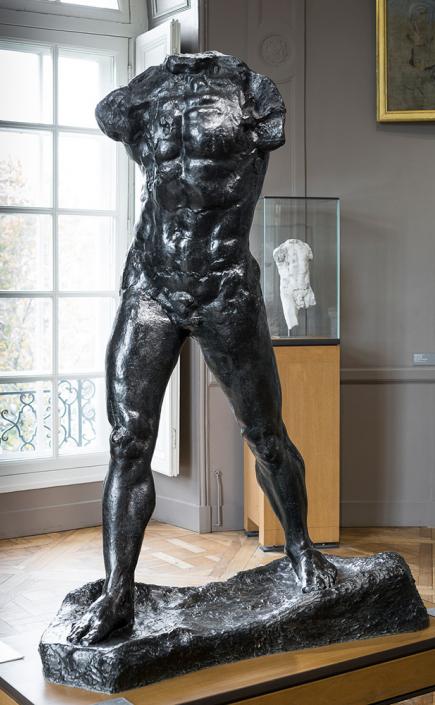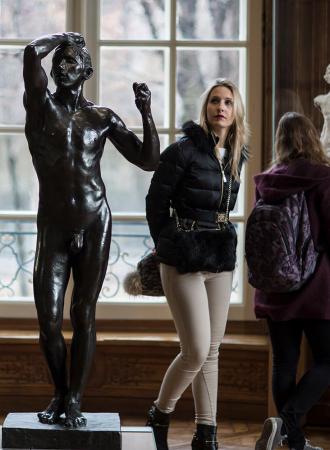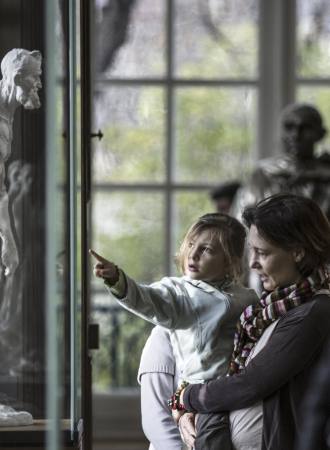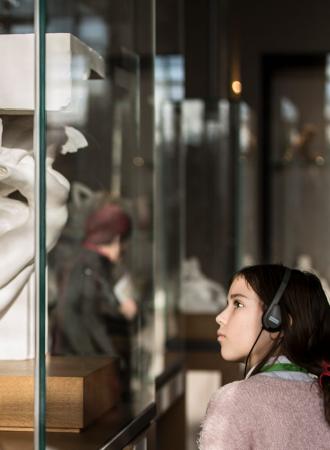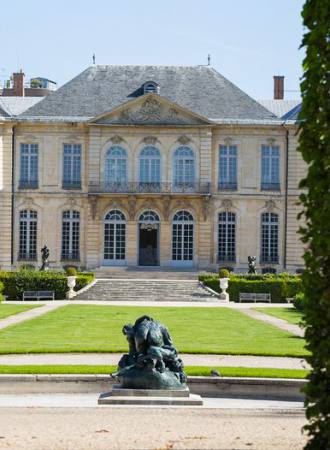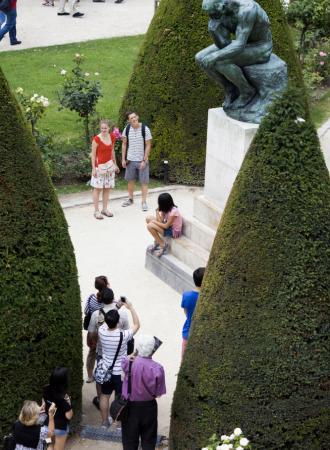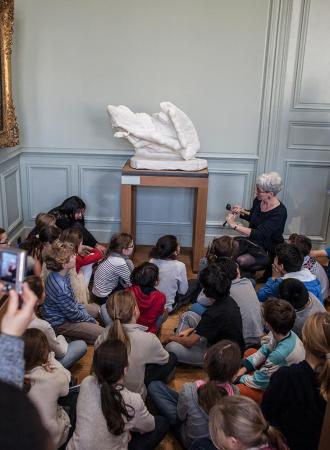Search the site
Iris, messenger of the gods
Auguste Rodin (1840 -1917)
Designed in 1891, the figure of Iris was completed with a pair of wings and arranged in a swooping movement in the second project for the Monument to Victor Hugo, in 1897 . In 1894, however, she was enlarged, turned the right way up, placed in a vertical position and cast in bronze by Alexis Rudier, before being photographed in front of The Gates of Hell , in 1896-98.
In Greek mythology, Iris acted as a link between the world of men and the gods. Entitled Iris, Messenger of the Gods, or Flying Figure, or even Eternal Tunnel, the work was both Symbolistic and mythological, yet also assumed a powerful formal presence. The position chosen by Rodin, which naturally recalls The Origin of the World (1866) by Gustave Courbet (1819-77), aroused not only indignation but also fascination.Weightless, energetic, the work suggests the movements of the French cancan and a gymnast stretching her limbs. The position, as well as the absence of the head and one of the arms, centre attention on the female genitalia.
The ARTwork in the museUm
Permanent collections – first floor, Room 15
We cannot guarantee the presence of all our artworks; some may be out on loan.
Discover the themes related to the work
Date of conception :
Circa 1895 - Cast made by Fonderie Alexis Rudier (?) before 1916
Dimensions :
H. 82.7 cm ; W. 69 cm ; D. 63 cm
Materials :
Bronze
Inventory number :
S.01068
Credits :
© Agence photographique du musée Rodin - Jérome Manoukian
Additional information
Iconography
- Iris, messenger of the gods(zip, 993 ko)
